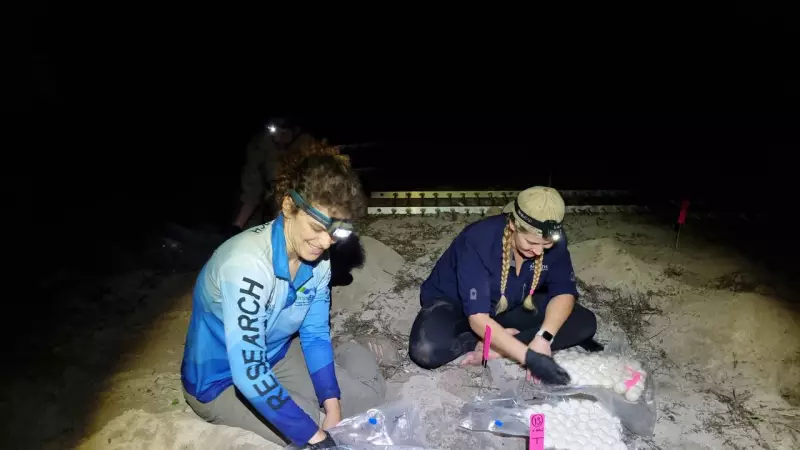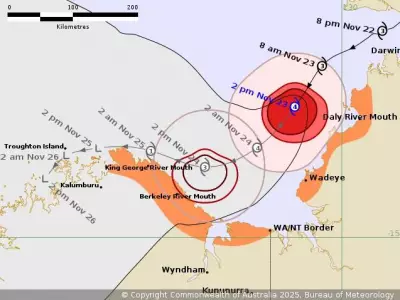
In an unprecedented conservation effort that could reshape marine protection strategies, scientists have successfully completed the world's largest turtle egg relocation project at Raine Island on the Great Barrier Reef. The ambitious initiative saw approximately 64,000 green turtle eggs carefully moved to cooler beaches in a bid to combat devastating climate change impacts.
The Raine Island Crisis
Raine Island, located approximately 620 kilometres north-west of Cairns, has long been recognised as the planet's most significant green turtle nesting site. However, this critical habitat has faced escalating threats from rising temperatures and extreme weather events. The situation reached a crisis point when researchers documented catastrophic nesting failures, with some seasons seeing up to 99 percent of eggs failing to hatch.
The primary culprit behind this reproductive disaster has been identified as sand temperature extremes. During hot periods, the nesting beaches became virtual ovens, cooking eggs before they could develop. Conversely, king tides and storm surges were flooding nests, drowning embryos and washing away countless eggs.
Dr Andrew Dunstan from the Department of Environment and Science highlighted the severity of the situation: "We were witnessing a conservation emergency unfold before our eyes. The world's largest green turtle population was facing catastrophic decline without immediate intervention."
The Great Egg Migration
The solution emerged as one of the most ambitious wildlife rescue operations ever attempted. Between December 2021 and February 2022, a dedicated team of researchers and Traditional Owners embarked on a massive egg relocation mission. They carefully excavated 64000 green turtle eggs from vulnerable nests on Raine Island and transported them via helicopter to cooler, safer beaches.
The operation required meticulous planning and execution. Each egg was handled with extreme care, maintaining its original orientation during transport. The chosen relocation sites included nearby cays where sand temperatures remained more stable and the risk of tidal inundation was significantly reduced.
This wasn't merely a rescue mission—it was also a crucial scientific experiment. Researchers divided the eggs into three groups: some remained in their original nests as controls, others were relocated to different beaches on Raine Island itself, and the largest group was moved to entirely new locations.
Remarkable Results and Future Hope
The outcomes have exceeded conservationists' most optimistic projections. The relocated eggs demonstrated a dramatic 33 percent increase in hatching success compared to those left in vulnerable areas. Even more encouraging was the survival rate of hatchlings from moved nests, which showed no significant difference from those that hatched in their original locations.
These findings, recently published in the prestigious journal Global Ecology and Conservation, provide compelling evidence that strategic egg relocation could become a vital tool in safeguarding marine turtle populations against climate change impacts.
Traditional Owner and project participant Donald Butler emphasised the cultural significance of this success: "For generations, our people have protected these turtles. This project combines our traditional knowledge with modern science to ensure future generations will still witness the miracle of turtles returning to nest."
The Raine Island Recovery Project, a five-year, $10 million partnership between the Queensland Government, BHP Corporate, and the Great Barrier Reef Foundation, has been instrumental in developing these innovative conservation techniques. Their work has included reshaping beaches to reduce flooding risk and installing protective fencing to prevent adult turtles from falling off cliffs.
A Blueprint for Global Conservation
The success of this mass relocation offers hope not just for Raine Island's green turtles but for threatened species worldwide. As climate change continues to disrupt ecosystems, adaptive conservation strategies become increasingly crucial for biodiversity preservation.
Dr Dunstan believes this approach could be applied to other turtle populations facing similar threats. "We've demonstrated that with careful planning and execution, we can give these ancient creatures a fighting chance against modern challenges," he stated.
The research team continues to monitor the hatchlings that emerged from relocated eggs, tracking their development and survival rates. Early indications suggest these turtles are thriving, potentially representing the vanguard of a more resilient population.
As the world grapples with escalating environmental crises, the Raine Island egg relocation project stands as a powerful testament to what can be achieved when scientific innovation, traditional knowledge, and determined conservation action converge. This Australian-led initiative may well provide the blueprint for saving threatened species across the globe from the mounting pressures of climate change.





